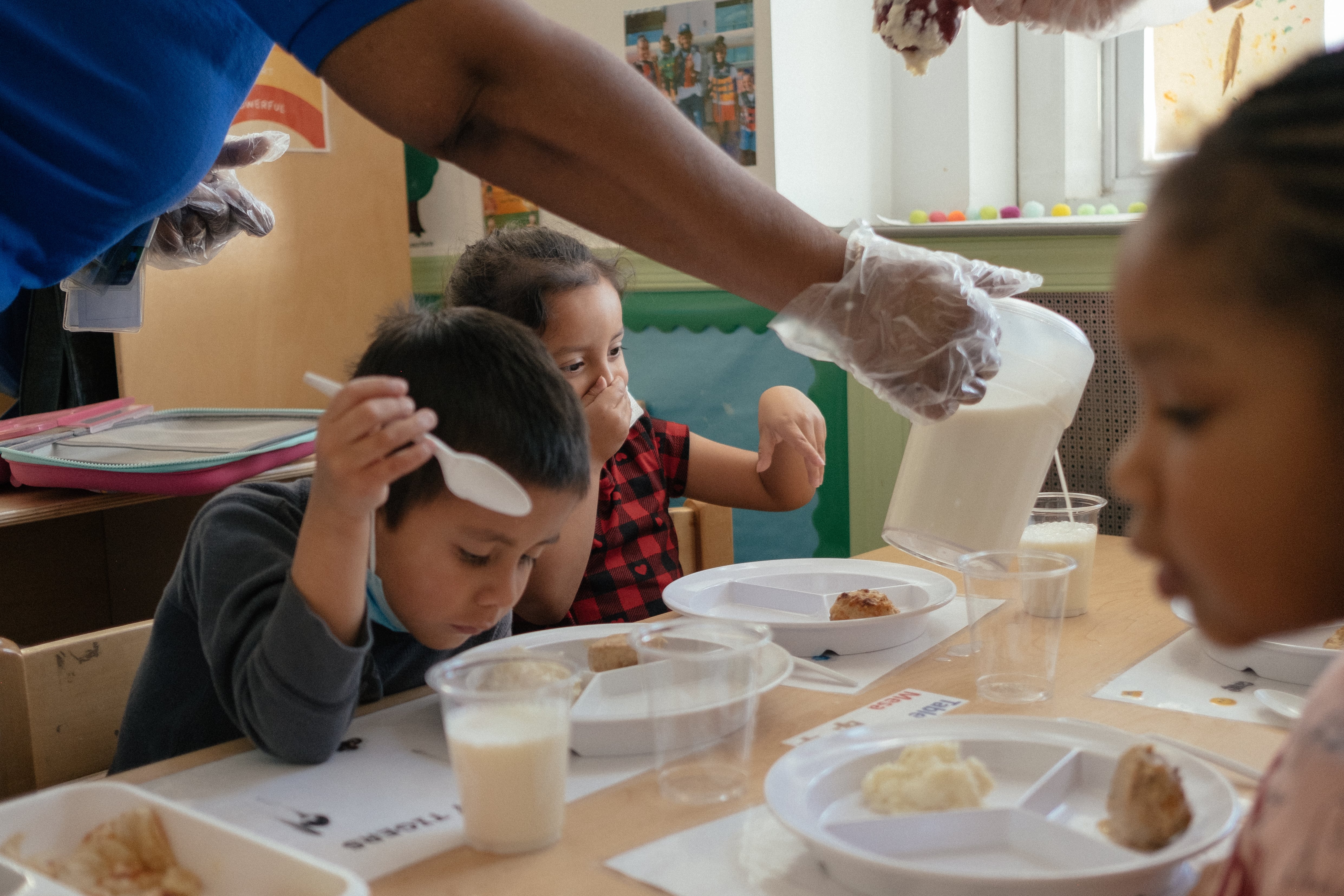McHenry School District 15, a northwest suburb of Chicago located 50 miles away, is feeling the financial strain of feeding students throughout the school day.
During the height of the coronavirus pandemic, the school was able to provide thousands of school meals to its 4,000 students thanks to federal waivers. This year, students who are not eligible for free or reduced lunch have to pay full price for meals — $1.60 for breakfast and $2.95 for lunch.
Kevin Harris, McHenry’s director of food services, said the district has kept the meal price the same since last year because the school board did not want to charge families more. According to the Illinois State Board of Education’s 2022 report card, 38% of students in the district are eligible for free or reduced lunch. The district is subsidizing the cost of meals without federal waivers or an increase in state funding.
In early August, Illinois Gov. J.B. Pritzker signed a law creating the “Healthy School Meals for All Program” to help local school districts pay for the cost of school meals to all students. State lawmakers and school officials say getting the bill signed into law was a step in the right direction, but the state did not allocate any additional money to make the program a reality for districts like McHenry.
Harris, a supporter of the bill, had hoped the law would help his school district receive more state funding for school meals, so it could feed more students.
But, Harris said, “without funding, it’s a worthless law.”
For some students, school is the only place where they can access breakfast or lunch throughout the day. The Food Research and Action Center, a nonprofit that advocates for solutions to hunger, has pushed for free meals in schools because studies show it improves students’ overall health and increases their academic performance in class and on standardized tests.
When COVID-19 closed school buildings around the country, the federal government gave waivers to school districts that allowed them to feed students at their homes, provide school meals to all students for free, and have flexibility on what was served to students. Illinois school districts saw a bump in their reimbursement from the State Board of Education at the time.
But the federal school meal waivers lapsed at the end of June 2022. Now families have to prove that they need subsidized school meals by filling out paperwork regarding their income.
Illinois is one of the latest states to move toward universal free meals for all students. Eight other states, including California, Colorado, Michigan, and Massachusetts, have increased funding and passed into law free meals for all students plans.
State Rep. Maurice West II, who represents Rockford and was lead sponsor of the “Healthy School Meals for All Program” bill, said it was important to take on the issue because it will reduce stigma for students who need assistance to afford school meals.
Under the new law, West said, school districts must first seek money from the federal government’s Community Eligibility Program, a federal program that helps schools that serve a majority of students from low-income households offer free meals to all enrolled students. Then Illinois will help school districts make up the difference after federal funding.
But West says when it came time to increase the budget to do just that, lawmakers didn’t add any money. In fact, the reimbursement funding level has been flat since the 2008 recession, he said.
With just $9 million going towards school meals, West said, “we need more for this to be school meals for all.”
Michael Jacoby, executive director of the Illinois Association of School Business Officials, said his organization estimates the Illinois program could cost the state around $200 million a year to fill in the gap after federal funding, when compared to other states that have a similar program. But without data from other states, he said, it is hard to estimate the exact cost.
The state will need to do a study to see how much it needs, Jacoby said.
Emily Warnecke, director of public policy at the Illinois Association of School Administrators, hopes the federal government will increase what they give to states.
The U.S. Department of Agriculture is considering changing its rules for the Community Eligibility Program. Currently, school districts are eligible for the program if 40% of the student population can receive subsidized meals. Now, the federal government is looking to decrease that threshold to 25%.
If that happens, more federal money will come in for the program, ”which would lessen the amount of money that the state would need to fully fund the program,” Warnecke said “That’s kind of an outstanding variable.”
Warnecke expects the federal government to act on that change in April 2024.
When it comes to the state’s “Healthy Meals for All Program,’’ Illinois lawmakers could allocate money for fiscal year 2025 during next spring’s legislative session. If that happens, school districts would be able to offer free meals next school year.
As for this year, students at school districts like McHenry will have to fork over almost $5 for breakfast and lunch every day.
Correction: Sept. 1, 2023: A previous version of this story identified Michael Jacoby as the executive director of the Illinois Association of School Boards. Jacoby is the executive director of the Illinois Association of School Business Officials.
Samantha Smylie is the state education reporter for Chalkbeat Chicago, covering school districts across the state, legislation, special education, and the state board of education. Contact Samantha at ssmylie@chalkbeat.org.






